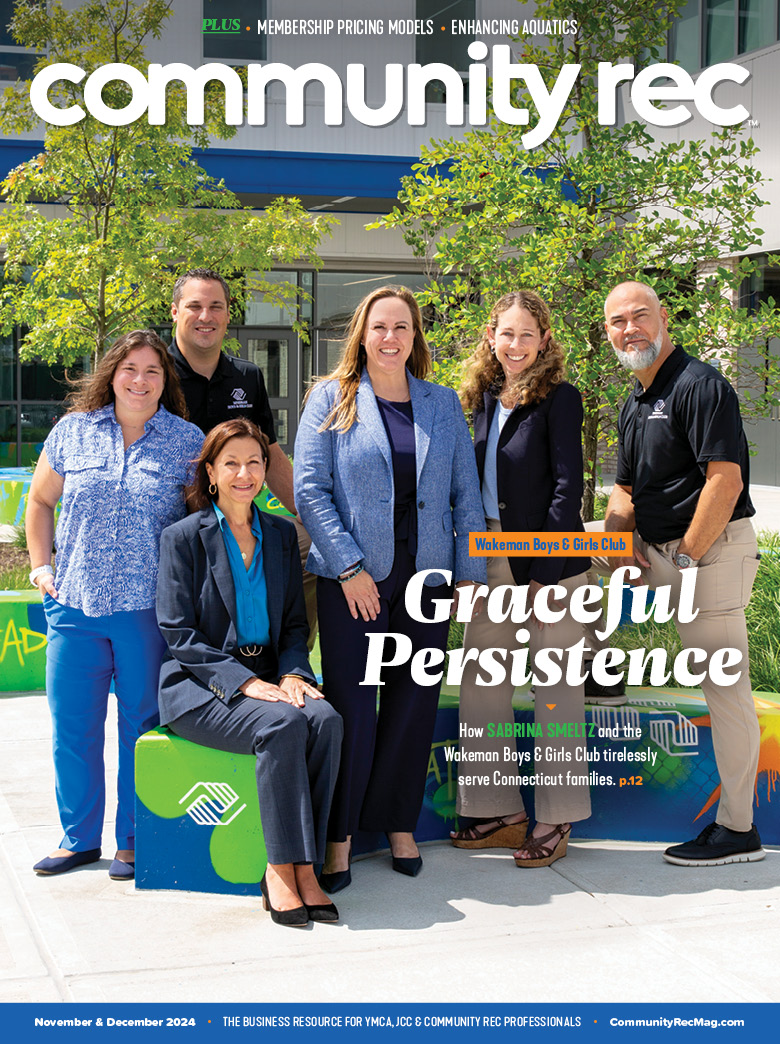An in-depth look into three unique membership models and how they’re benefiting their communities.
The traditional family image no longer looks like it once did. Today, households can be made up of different relationships with each person having varying responsibilities and lifestyles. This evolution is requiring many rec centers to adjust with modern times and find ways to best serve its community. While typical family membership packages are still valuable, many organizations are finding they can serve their community with other, more unique options.
These membership plans can vary in many different ways including membership duration, fee amount and category distinctions. For example, the Joan and Alan Bernikow JCC of Staten Island has four membership types not based on age or household, but instead on how the member plans on using the J.
The categories are WellPro, which includes all-inclusive access to the JCC’s facilities and programs; Wellness, for those who only intend to use the fitness areas, basketball gym and indoor pool; Program, for community members wanting to play cards and mahjong; and Summer Swim Club, for access to the outdoor pool during the summer.
According to Lisa Lubarsky, the director of membership and community engagement at the JCC of Staten Island, membership has grown tremendously since introducing these categories, and the community appreciates the flexibility. “Our JCC aims to be affordable for families, and they can pick the membership that best suits their needs,” she said. “We found our pricing was on par with competitors, and when we discount our pricing — which we do regularly — it’s even more so.”
While a highlight of this system is allowing families to choose the best fit, sometimes prospective members can be confused and unsure of the best option for them. As such, training your membership team to be able to help in this area is critical. The JCC also offers a three-month trial membership to see what’s offered and determine what they’ll use the most.
Ultimately, this model works well for the JCC and its diverse community. Having their rates correlate with how they engage with its services ensures they can participate without having to pay for what they won’t use.
However, this model may not see the same success at another organization. Figuring out if it will help you serve your community is a step in the implementation process that shouldn’t be skipped.
“Do some research and see what works for other community centers, but also be willing to tweak it to fit your community,” advised Lubarsky. “What works for a different community may not work for you, so don’t be afraid to go outside of the box to fit your community’s needs.”
Showing a commitment to providing better solutions adapted to your community can also increase loyalty and satisfaction. Rosemary Linder Day, the vice president of marketing and membership at the Lakeland Hills YMCA, emphasized how a personalized approach can lead to a win-win for everyone. With that in mind, the Y offers the three-month Triple Play option along with typical year-long memberships.
“There’s no such thing as one-size-fits-all anymore,” stated Linder Day. “As members’ needs change and evolve, we can adapt and grow our membership model. This allows us to diversify our revenue stream. If our Y has done its job in making three-month memberships work, then our annual membership will be even more efficient.”
However, the Y was originally reluctant to implement its Triple Play option. Helping people toward a healthier life and creating a true sense of belonging takes longer to cultivate, but these memberships are valuable for many in the community.
Common members on a Triple Play plan include those who are in the Mountain Lakes, New Jersey, area seasonally, summer and college students, swim-lesson participants, and those apprehensive to sign up for an entire year. It’s also valuable for families who have children who want to try a new sport or activity with low commitment.
“The public wants choice,” said Linder Day. “They don’t want to settle. With short-term and long-term membership options, they don’t have to choose. We want them to want to be a part of our community.”
Triple Play memberships make up 15% of all memberships and play a greater role in the Y’s new business model based on achievement, belonging and relationships. In addition, the Y began partnering with Daxko two years ago to help with sign-ups and data-tracking to increase opportunities for connection and more. New initiatives under this campaign include an art gallery installation and offering art therapy for seniors and those with disabilities.
“Our goal at the Lakeland Hills YMCA is to ensure our members can achieve a healthier lifestyle, belong to a community greater than themselves, make new friends and meet new people,” said Linder Day. “It’s not about how much weight you want to lose or how many fitness classes you can take. An important element in all of this is everyone is a member of the community; therefore, everyone is welcome at the Y.”
Another Y reflecting values of belonging and inclusion in its membership models is the YMCA of Metropolitan Detroit and its Y for All Membership option. It serves households with a combined annual income lower than $49,000. The plan is $40 dollars a month for the family with full access and privileges of a traditional membership which can typically be up to $89 a month.
This initiative is not new as it was implemented in 2011 as a response to the recession, but it still proves valuable more than 10 years later. “We wanted to make sure families didn’t have a financial barrier to their membership to the YMCA,” said Latitia McCree-Thomas, the senior vice president of communications and marketing at the YMCA of Metropolitan Detroit. “We have a scholarship program for people who need it, but we also wanted to create something that was just part of our day-to-day operations so we never had to worry about people with low-to-moderate income accessing our services.”
Having and marketing this option to families in Detroit helps cement the Y’s commitment to serving its community. People can be apprehensive if they don’t think they can afford a YMCA membership. When they learn about programs in place like the Y for All initiative, they can see how the organization is keeping accessibility at the heart of operations.
The YMCA of Metropolitan Detroit has over 1,000 Y for All memberships, with more than 4,000 people having access to the Y’s services and 1,700 being children. Those part of this membership plan also receive first notice about special projects and services including the Detroit Swims program which offers free water safety lessons.
“This initiative has helped us make sure we serve all socioeconomic levels,” explained McCree-Thomas. “It’s in our mission statement to serve all, and it’s a daunting task. There are always barriers and we do our best to eliminate them. The creation of this membership helps us do that, but we still have to be financially mindful and pay the expenses so we can continue operating for the community. We still want to do it in a manner that isn’t cost-prohibitive.”
As households continue diversifying, it’s important to find ways to remain inclusive and accessible. Adopting flexible options can increase member satisfaction, community engagement and help you carry out your mission. Understanding how to best respond to your community’s unique needs will help you continue promoting health, wellness and belonging for everyone.










